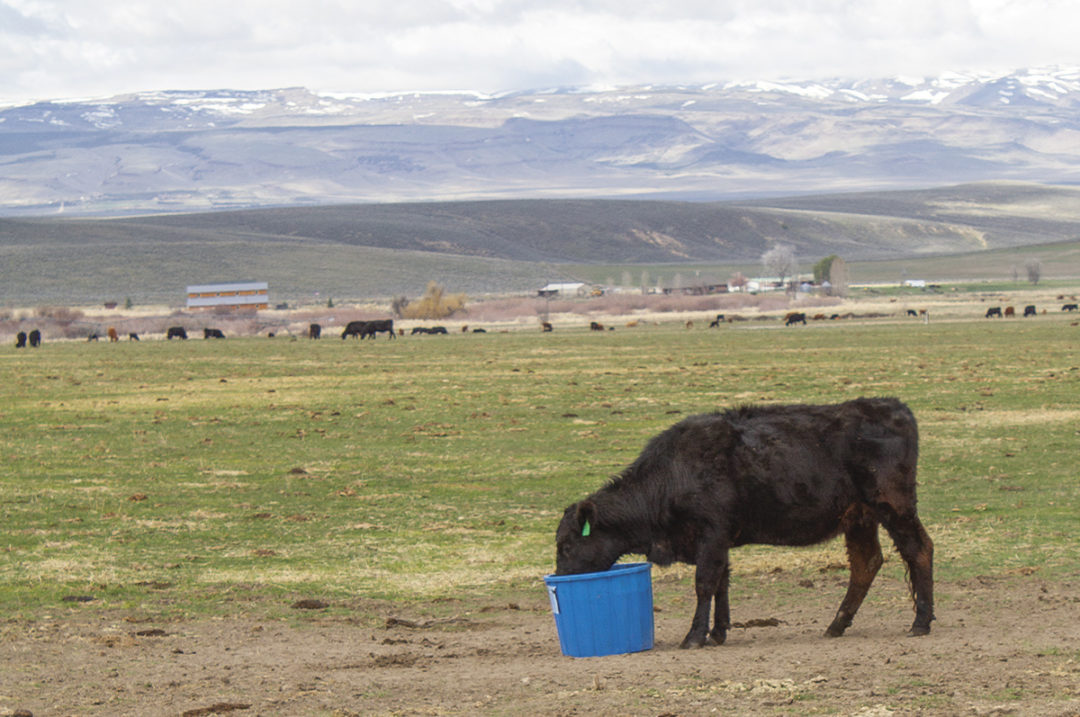Livestock minerals in both their macro and micro forms have been around for decades. While their existence has remained constant, their importance, delivery and management has adapted through the years.
Adele Harty, cow-calf field specialist with South Dakota State University Extension, believes that for a mineral program evaluation, an understanding of what is present in forages, pasture grasses and rations is key. This evaluation can be accomplished by first observing where cattle are grazing or consuming forage or grain-based rations, then taking representative samples.
“It’s the most accurate way to represent what they already have in their diets,” says Harty. “If the goal is to determine what’s best for an operation, not discounting a potential change, I would recommend multiple samples over time, as feed qualities are constantly changing.”
She advises working with a nutritionist to evaluate sample results and determine a suitable mineral mix. While some flexibility exists in local feed store offerings, it’s helpful to employ their knowledge of specific possibilities.
“There are some general rules of thumb, but when challenges occur, it’s time to dig deeper and figure out what’s going on in individual operations,” says Harty. “Grazing management practices and varied forages bring different minerals out of the soil. Even close neighbors will have variances.”
The proof is in the details
Harty describes intake as an ongoing issue, with some management practices working well and others lacking. Moving stations closer or farther from water sources or adding a small amount of dried molasses to increase palatability may be options to encourage intake. Switching minerals with a similar analysis breakdown might be necessary.
“I encourage producers to monitor intake and write down the numbers,” she says. “We might think animals are overconsuming, but after some calculating, we could find we’re actually limiting them. It’s important to see if our perception is reality.”
Factors working together for good
“When considering mineral nutrition, we can become interested in almost anything,” says Stephanie Hansen, beef feedlot nutritionist at Iowa State University. “I like to tell my students they can’t throw a dart at a biological pathway and not hit a mineral or vitamin cofactor.”
Even when energy and protein levels are correct, if the right levels to support the process of use aren’t present, problems will occur. “We’ll see reduced reproduction, sicker calves and poorer carcasses,” she says. “Minerals provide for all these desirable aspects.”
In general, macro minerals such as calcium, phosphorus, magnesium and sulfur aid skeletal development and structural processes, sustain organs and uphold fetal growth. Trace minerals copper, zinc and iron reinforce enzymes, keeping everything functioning.
The past and present relationship
Hansen explains that some factors have changed over recent decades, beginning with an increasing availability of sources to choose from.
“We have our inorganics and products binding items like zinc to an amino acid, which are handled differently in a cow’s body. Other sources besides inorganic and organic change how available they are. Potential sources have exploded in the last 15 to 20 years.”
She outlines another change is that the beef raised today is extensively altered from the beef of the 1930s to 1960s, when many of the level recommendations were first made. From the 1970s to the early 2010s, cattle almost doubled their average daily gain potential.
“These recommendations are somewhat outdated,” says Hansen. “We’re making more beef with fewer resources because of our technology, which is great. But while our animals have a tremendous capacity to grow, reproduce and make milk, we don’t have a reliable understanding of what they need to optimize their performance.”
Hansen believes many research perspective opportunities exist to help determine the right amount of minerals to be delivered at the right time, which will support production optimization.
Some helpful relationships have appeared through recent studies – like establishing zinc as critical to immune functions – but many are still unknown. For example, selenium use hasn’t been researched well, although recent data from human COVID-19 studies have shown that minerals such as selenium, copper, zinc and iron are all important in how quickly people’s lungs recover from a disease challenge. These studies may have implications for bovine lung diseases as well.
Weighing the value of the injectable option
Injectable minerals are gaining in popularity but also come with both pros and cons. Hansen encourages those producers using injectables to read and follow label instructions carefully, as overdoses may occur.
An additional negative is cattle need to be worked through a chute for injections. If they can be completed in combination with another procedure like pregnancy checking, branding, castrating or vaccinations, this will save labor and reduce stress.
“An added benefit is we don’t need to worry about gut absorption because we’re skipping this step, getting the mineral straight into the bloodstream and then to the liver where it’s used when needed,” says Hansen. “Tracked studies have demonstrated the liver acts as a kind of distribution warehouse where an order comes in for something like copper, and a copper-dependent enzyme is loaded and sent to the muscle or peripheral tissue that demanded it.”
Unfortunately, limited injectable choices don’t contain the entire list of required minerals. Multimin, which at this point is the primary option, contains only four trace minerals, making an additional oral delivery mandatory.
Harty agrees that using injectables in supplementation can be beneficial, but warns producers to be aware of high-selenium regions like those in South Dakota. For mature cows in a high-selenium area, toxicity is a real concern.
Don’t forget the water
Harty also encourages water analysis, as it will greatly impact a program.
“Understanding what’s in the water is vital,” she stresses. “Send a water sample along with forage samples to receive a complete lab analysis. From there, follow it up with regular sampling of forage, grass and water.”
She emphasizes that a visit with a nutritionist will kick-start the conversation and initiate a workable plan.
“Mineral nutrition is complex, and there’s no one-size-fits-all answer,” Harty says. “Having as much information as we can from someone who understands the variations and options will make the selection decisions easier and more accurate.”











